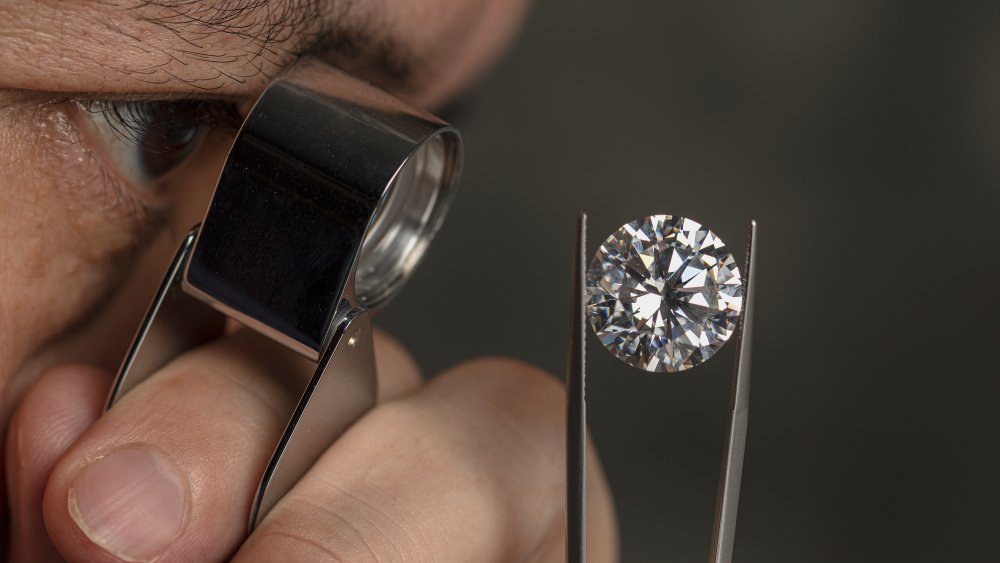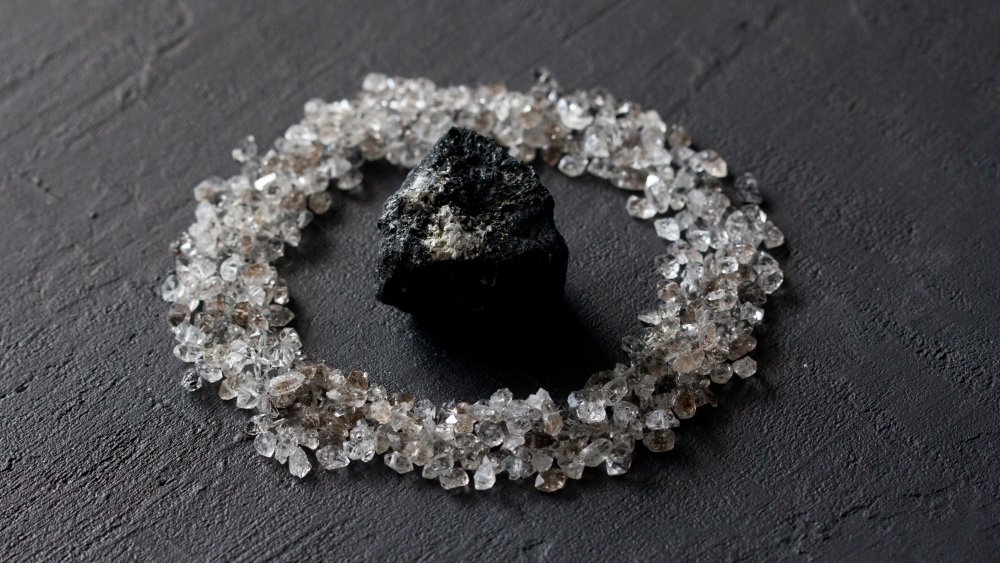Diamonds Aren't Made Of Coal. Here's What They're Really Made Of
Back in grade-school geology, you probably learned that intense heat and pressure can turn coal into diamond. If you're smart, that probably made you act extra naughty that year, in the hopes that Santa would deliver you a valuable lump of pre-diamond coal. But science is here to crush our dreams once again; diamonds don't come from coal at all.
Dr. Kat Arney of The Naked Scientists writes that Earth's natural diamonds were formed deep underground over a billion years ago. Far below the Earth's surface, long periods of extreme heat and pressure turned carbon-rich minerals into shiny diamonds. Per Geology, these carbon minerals may have been found in rocks like limestone, marble, and dolomite. Coal, however, is not one of the potential sources for diamonds. How do we know for sure?
Because coal is formed through the fossilization of dead plant matter. Since land plants only emerged on Earth about 450 million years ago, coal itself dates back only 300 or 400 million years. This means that diamonds — which are over a billion years old — predate coal by hundreds of millions of years. In fact, Indiana Public Media reports that the Earth's youngest diamonds are a billion years old, with older ones dating back as far as 3.3 billion years. Compared to diamonds, coal is a baby. Additionally, some diamonds are brought to Earth in meteorites, or form on Earth as a result of high-intensity meteor impacts. Again, no coal is involved.
Coal is too impure to form diamonds — but graphite isn't
We've shown that diamonds aren't made from coal, since they've been around long before coal. Nevertheless, you might still wonder, "Could coal be turned into diamonds?" The answer is, unfortunately, no. Pure diamonds are made from 100 percent carbon and no other elements. Coal, on the other hand, can range greatly in its chemical composition. Per Treehugger, coal is mostly carbon, but typically includes a mix of other elements as well — hydrogen, nitrogen, oxygen, sulfur, arsenic, and more. This makes coal a decent fuel, but a horrible source for diamonds; the percentage of carbon is simply too low.
But what can be turned into diamonds? Pencils. More specifically, the graphite inside pencils (sometimes erroneously referred to as "lead"). Graphite, like diamond, is 100 percent carbon. The only difference between the two substances is the arrangement of carbon molecules, which form weak bonds in graphite and incredibly strong bonds in diamond. Dr. Arney explains that scientists have actually been able to turn graphite into diamond through a process called HPHT — High Pressure and High Temperature. But HPHT is difficult, and not very common today.
So if you're looking for diamonds, forget about coal, and focus on graphite. Who knows — if you sit on a pencil for long enough, you may not have to buy an engagement ring.

